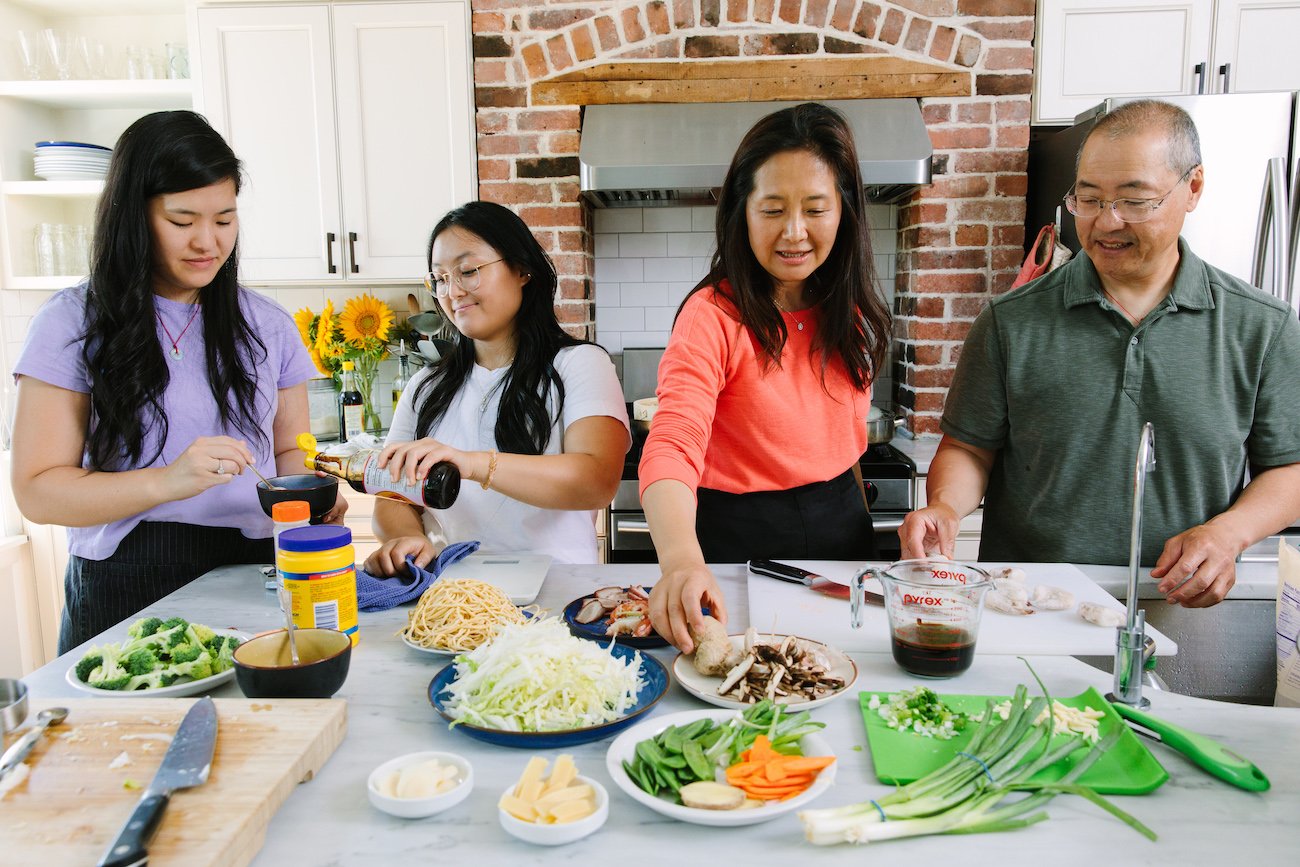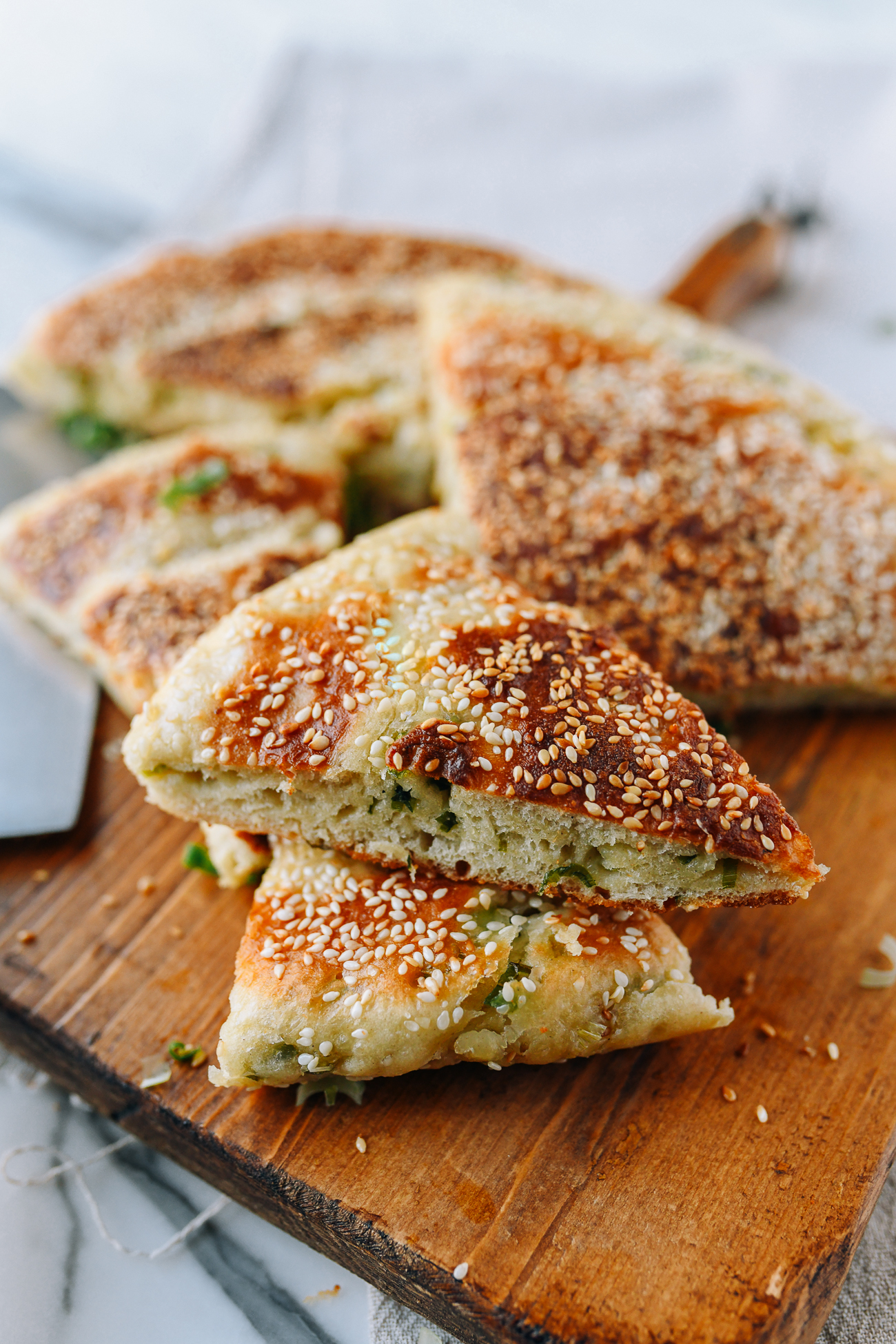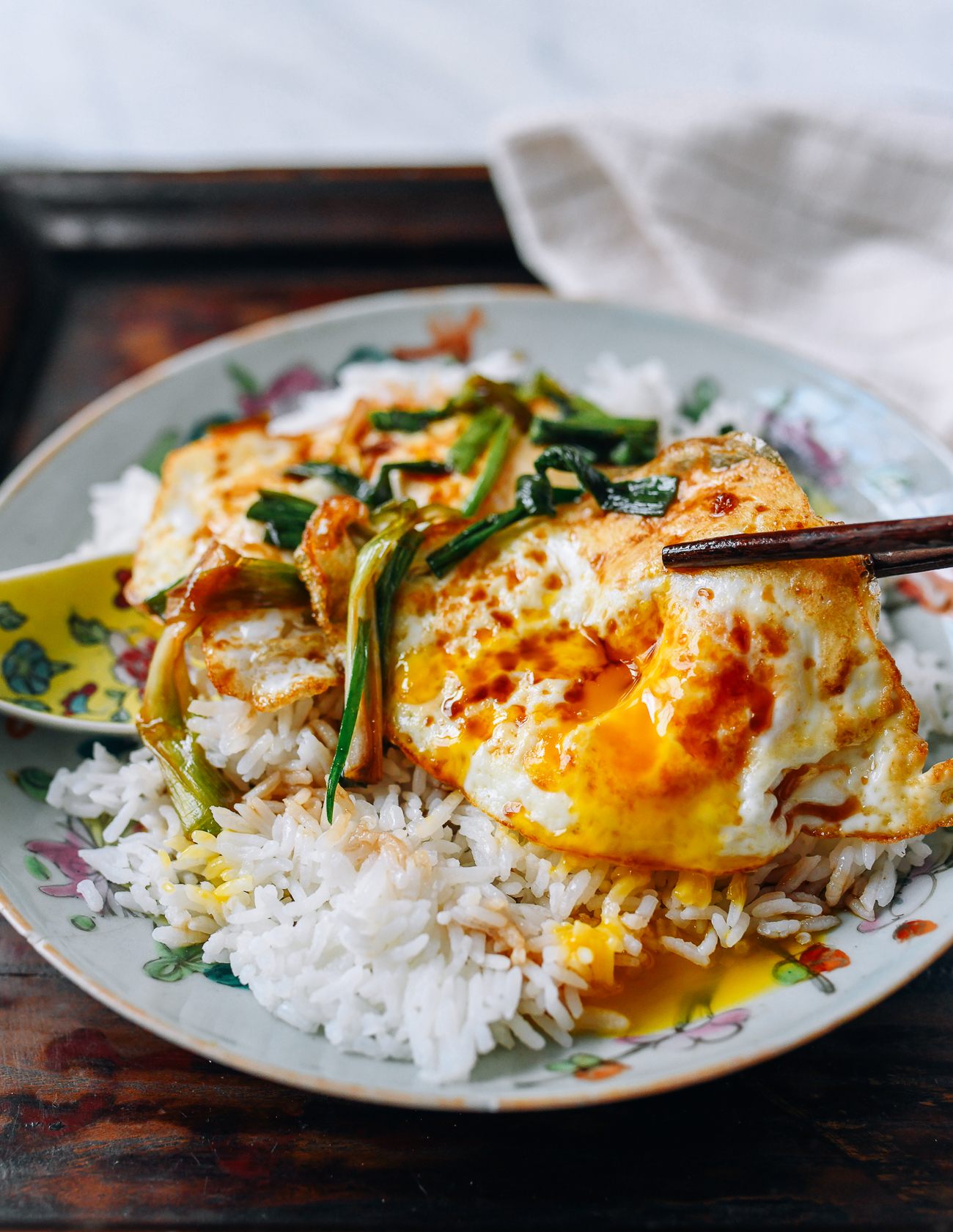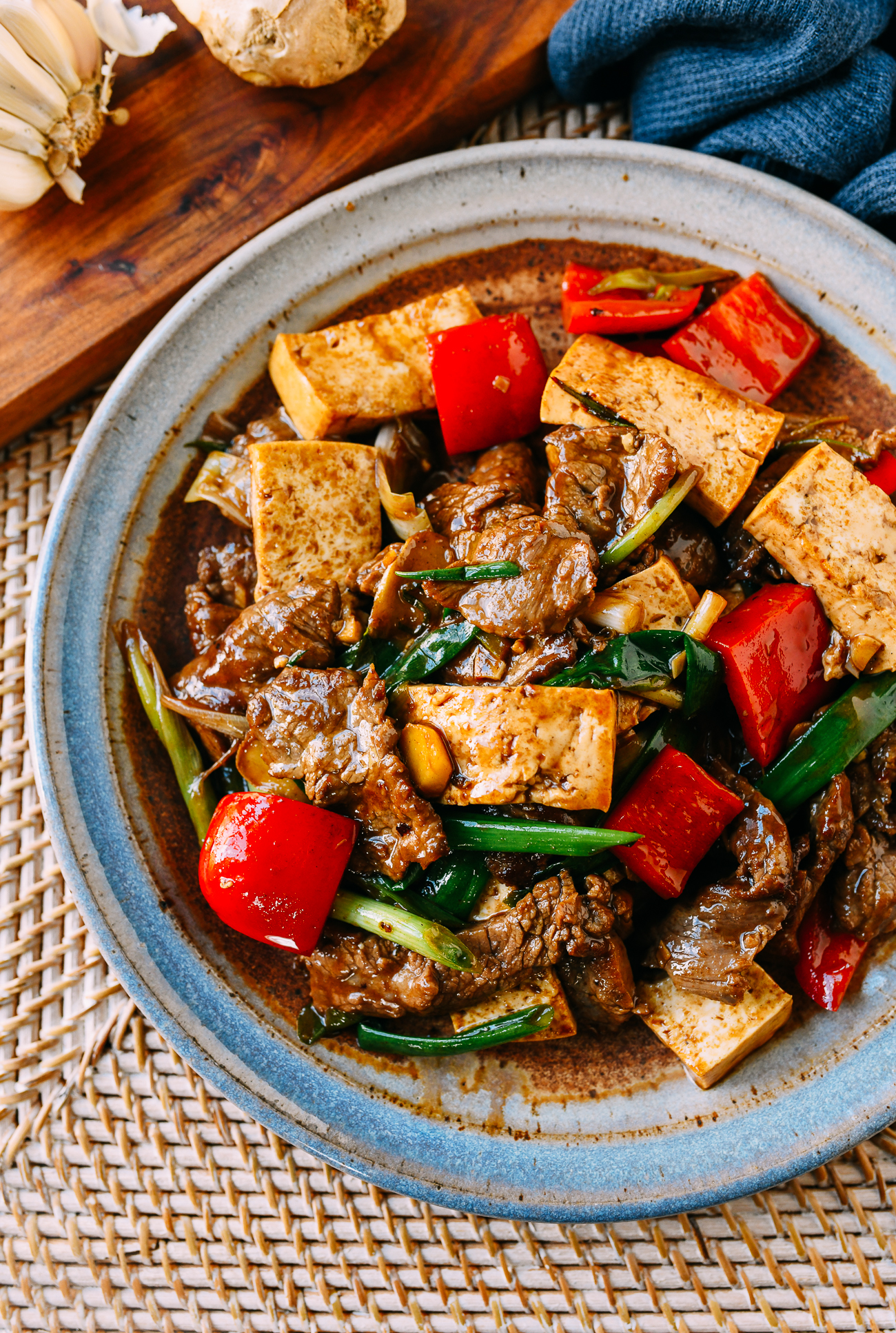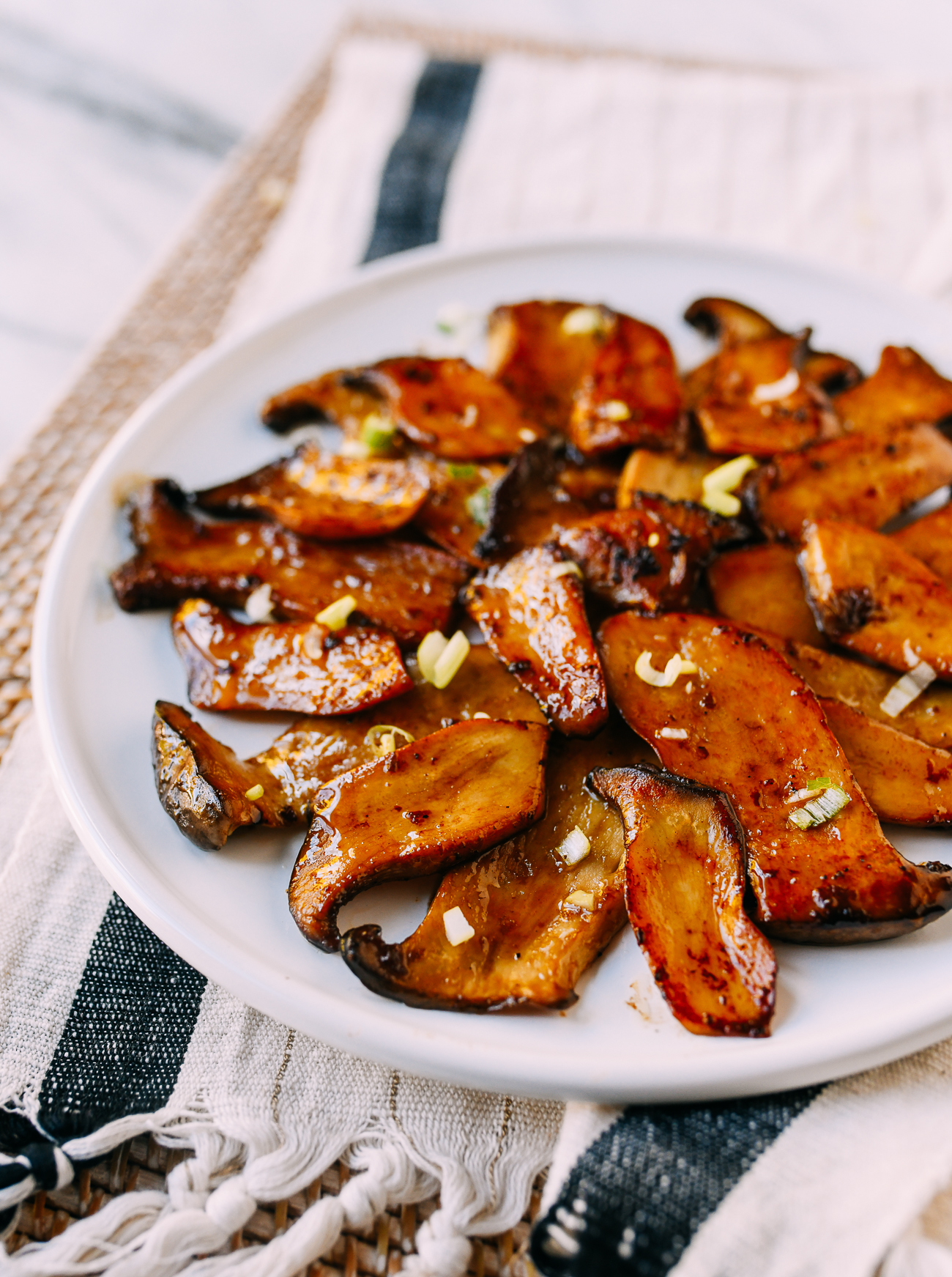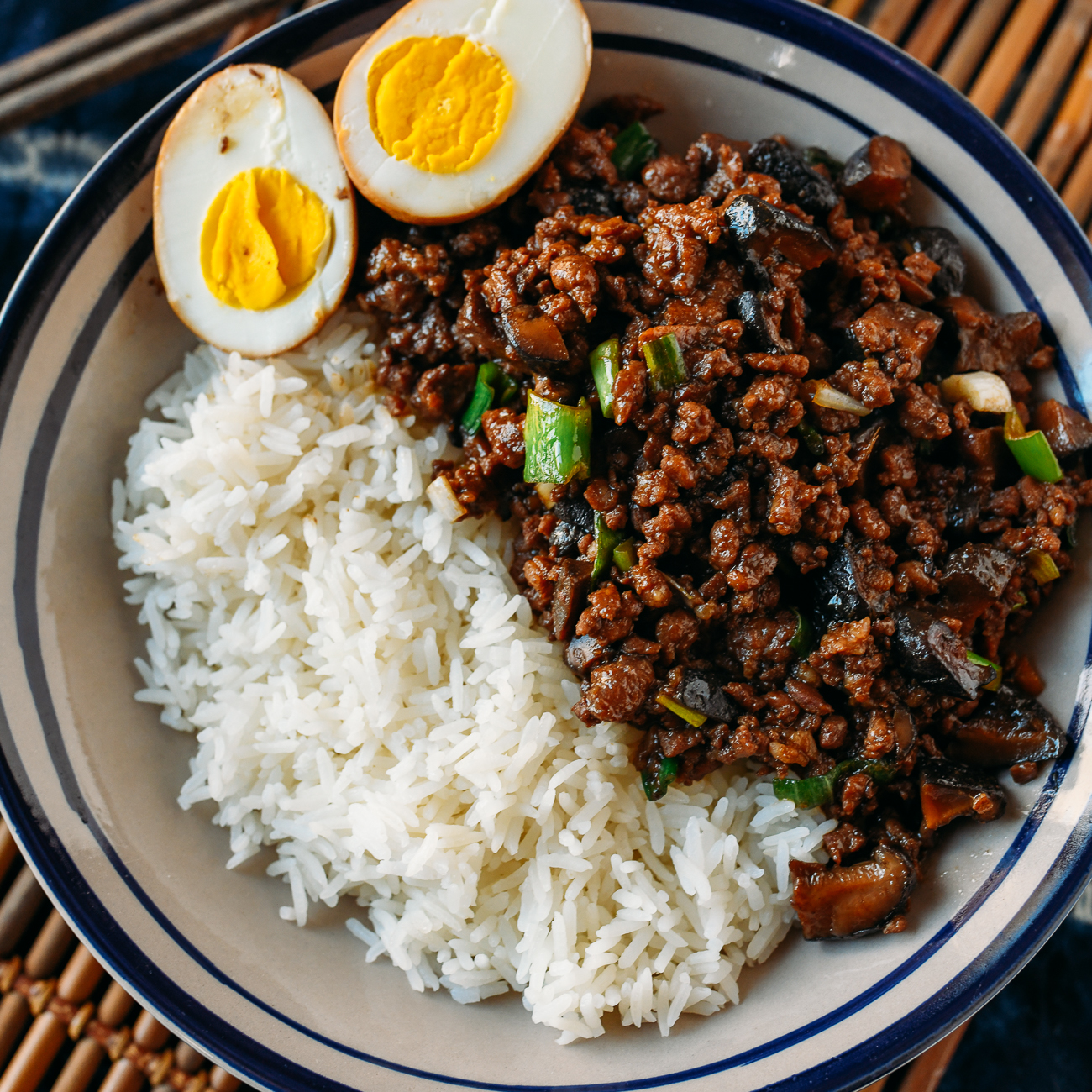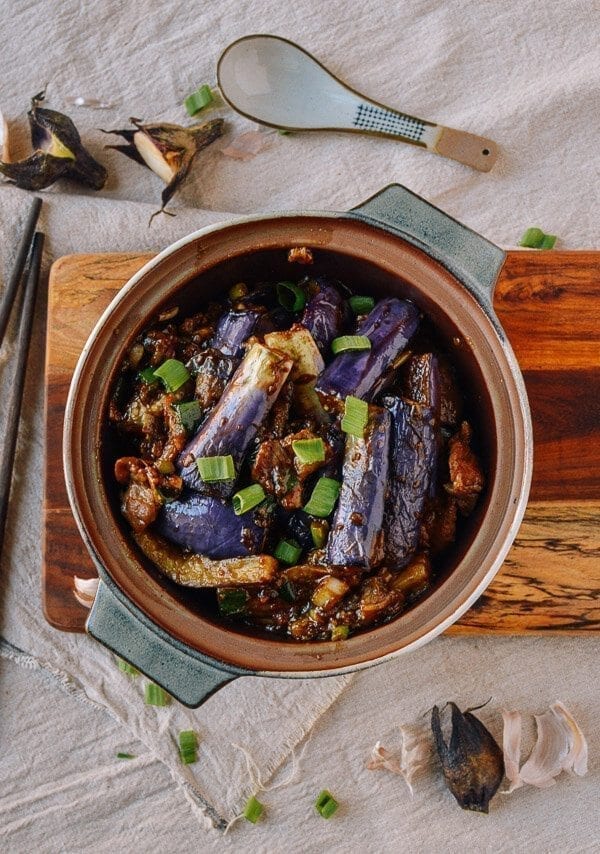
We have another classic recipe for you today, and we’re very excited about it! This Cantonese eggplant casserole is not just another ho-hum eggplant dish. Trust me when I tell you that this dish has amazing depth of flavor, and the secret ingredient is Cantonese salted fish.
You might not know this, but the Cantonese are crazy about their salted fish––especially the older generation. Bill is definitely one of them (though he’s not going to like that I lumped him in with the “older generation.” Haha). He starts drooling at the mere mention of it! You can verify this if you ever meet him in person.
The best choice for all your Chinese salted fish needs happens to be the most expensive: mei-xiang-ma-you (梅香马友) . Here is Bill’s write-up about how to look for salted fish at your local Chinese grocery store. What makes this salted fish special is that it is first fermented, and then salted. It has that special texture and aroma that one either loves or hates.
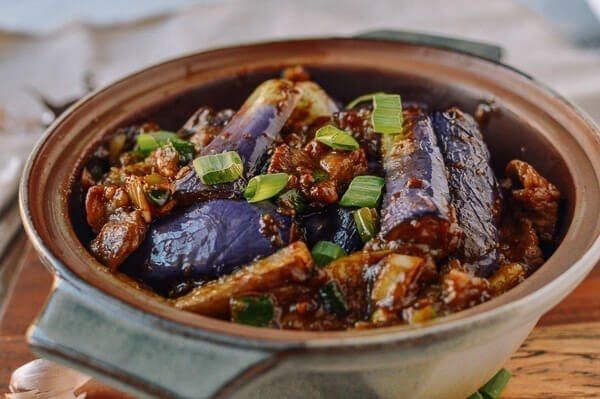
If you can’t find salted fish where you are, a great substitute would be salty, nutty anchovies, which can be found canned or jarred in olive oil in any grocery store these days. As with most recipes that use anchovies, they add a very subtle nutty flavor to the dish without making it “fishy” at all! Then again, if you grew up eating this eggplant casserole, you will probably want to double the amount of fermented salted fish specified, because I know your taste buds will be “looking” for that flavor. For more ways to use salted fish, check out our recipe for Salted Fish Fried Rice with Chicken.
On a separate note about the eggplant, the best eggplant to use for this dish would be Chinese eggplant, which are longer, thinner, and a lighter purple than normal eggplant. But you can feel free to use whatever eggplant you can get your hands on. You’ll also notice that the eggplant is fried before being added to the dish. For this eggplant casserole, that step is essential. For an alternative recipe that isn’t fried, check out Bill’s eggplant with garlic sauce.
Cantonese Eggplant Casserole: Recipe Instructions
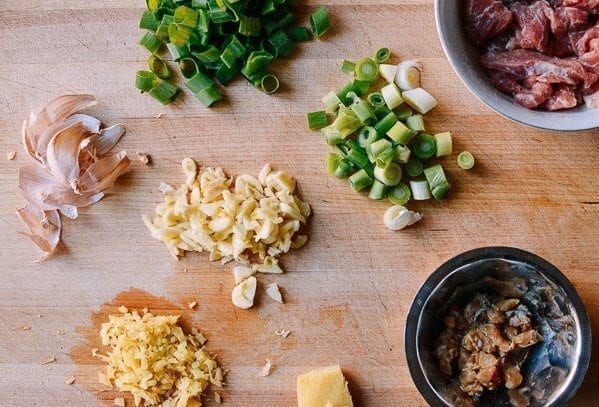
Toss your pork (or chicken) with 1/2 teaspoon cornstarch and set aside. Wash the eggplants and dry them off with a clean kitchen towel. Trim off the ends, and cut the eggplant into 2-inch x 1/2-inch pieces.
Add the eggplant pieces to a large zip top bag and toss with 2 tablespoons cornstarch until evenly coated.
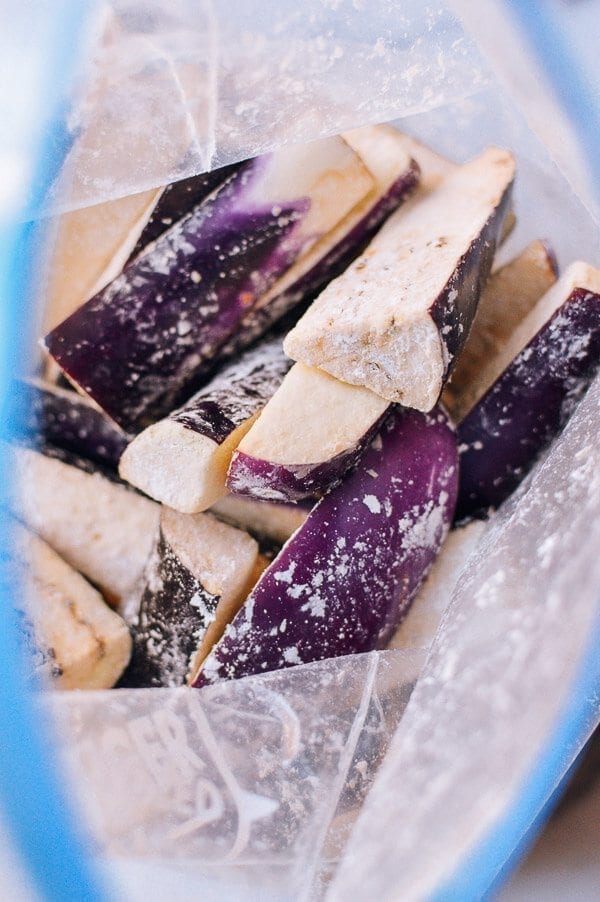
Heat 1 1/2 cups canola oil in a small pot (the oil should be about 3/4-inch deep) over medium heat. To test the oil temperature, stick a bamboo or wooden chopstick in the oil. If you see a good deal of bubbles forming around the chopstick, the oil is ready for frying. Fry the eggplant in batches, cooking each batch for about 2 minutes. Drain on paper towels and set aside.
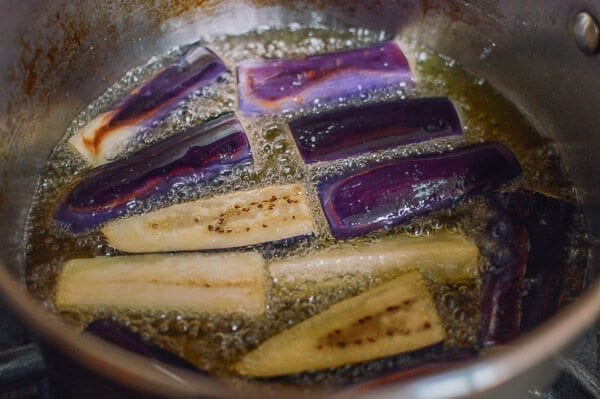
Heat 1 tablespoon oil in your wok over medium heat. Add the ginger, garlic and the white parts of the scallions.
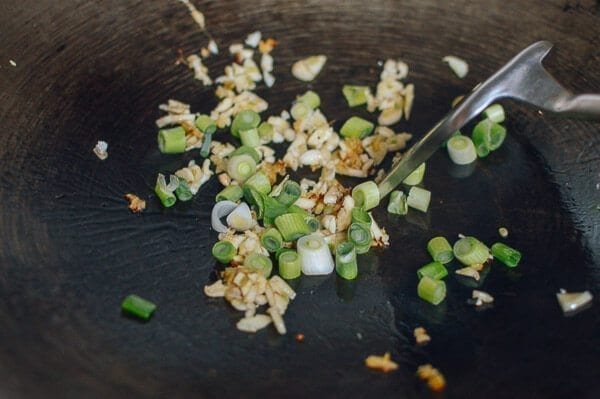
Cook for 30 seconds, and then add the pork (or chicken) and the Chinese salted fish (or anchovies). Stir-fry until the meat is cooked through.
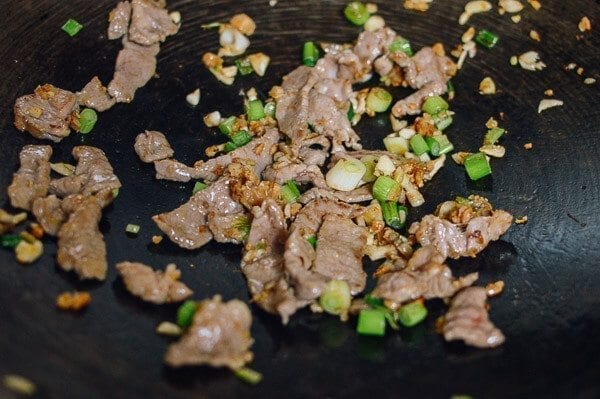
Now add the eggplant, sugar, Chinese black vinegar, dark soy sauce, light soy sauce, and the green parts of the scallion. Also add 1/2 cup water.
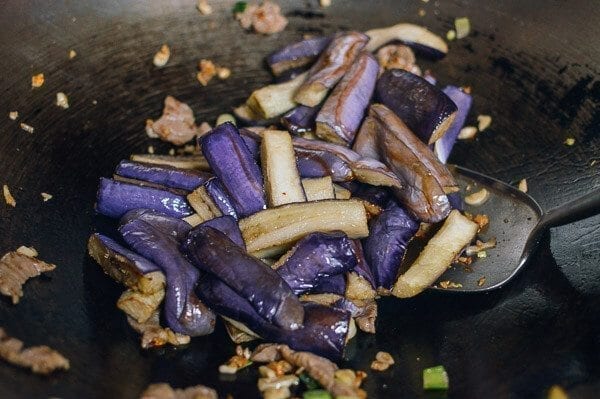
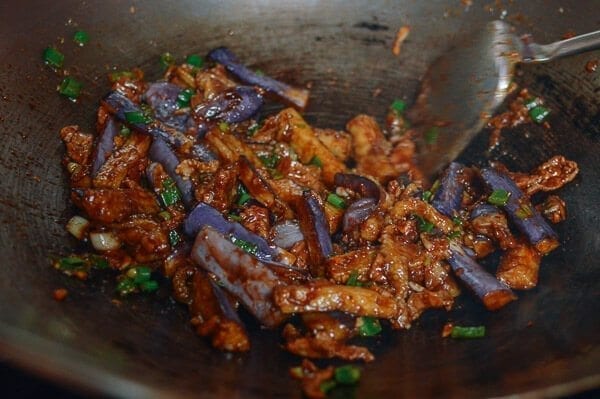
Turn up the heat to high and mix everything together. Because of the cornstarch used to coat the eggplant, the liquid should thicken into a sauce. Add a little more water if necessary to reach the desired sauce consistency. This dish should have some sauce, but shouldn’t be swimming in liquid. Also, remember not to cook the eggplant for too long; it shouldn’t lose its shape. Once the sauce is thickened, it’s ready to serve!
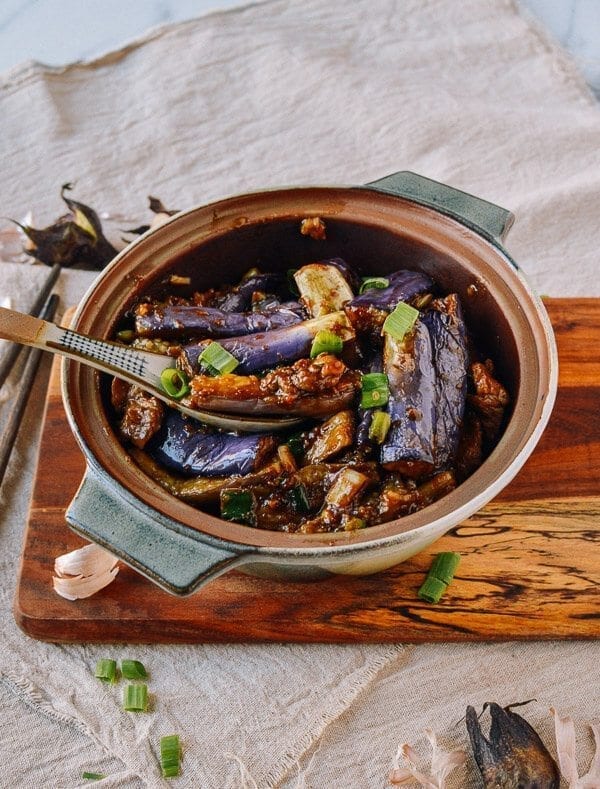
Serve this classic Cantonese eggplant casserole dish with lots of steamed rice!
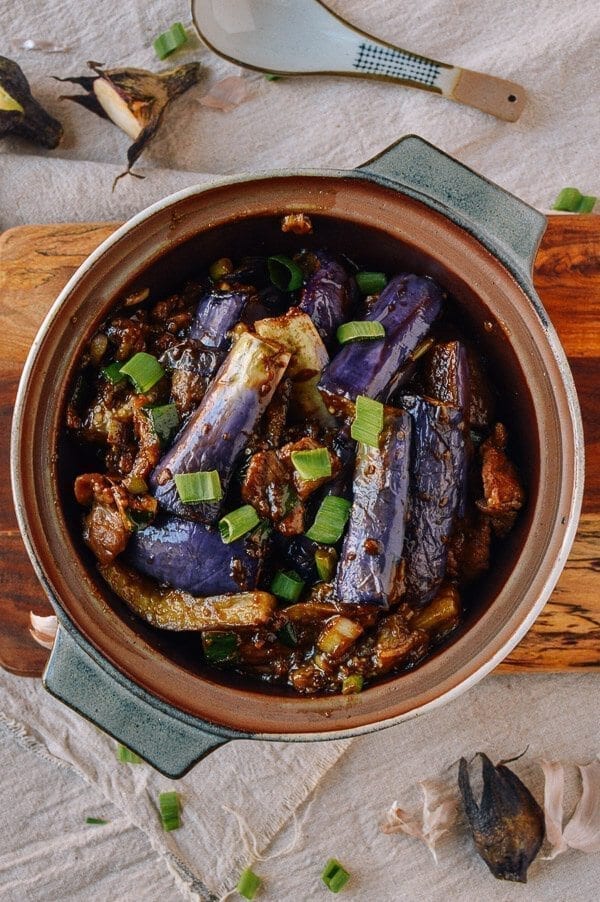
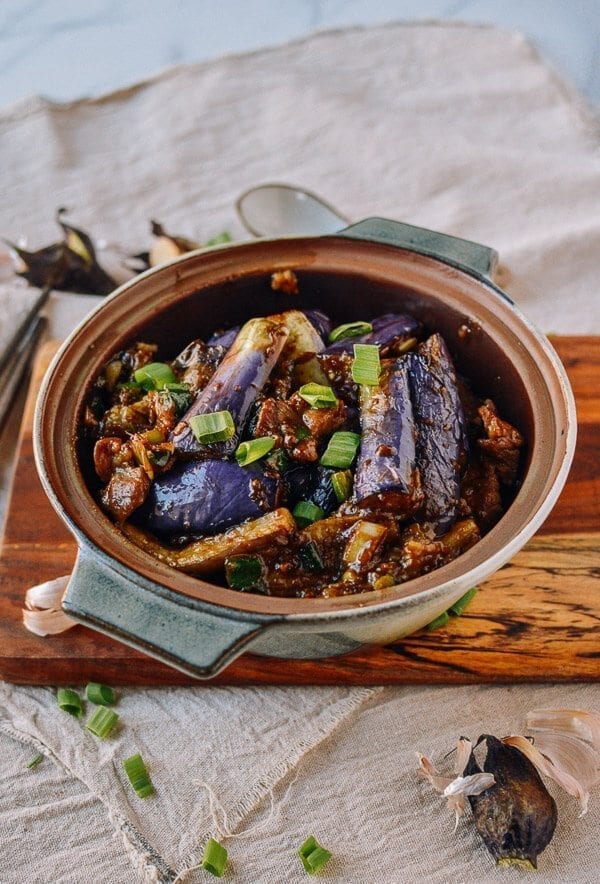
Looking for more authentic recipes? Subscribe to our email list and be sure to follow us on Pinterest, Facebook, Instagram, and Youtube!
Recipe
Cantonese Eggplant Casserole
Ingredients
- 4 oz. pork (or chicken, thinly sliced; 110g)
- 2 tablespoons cornstarch (plus 1/2 teaspoon)
- 1 1/2 pounds eggplant (680g, preferably Chinese/Japanese eggplant)
- 1 1/2 cups canola oil for frying (350 ml, plus 1 tablespoon)
- 3 slices ginger (minced)
- 4 cloves garlic (smashed and chopped)
- 2 scallions green parts and white parts separated and chopped
- 1 oz. Chinese salted fish (30g, deboned and minced; may substitute anchovy fillets)
- 1 teaspoon sugar
- 1 teaspoon Chinese black vinegar (look for the yellow bottle labeled, "Chinkiang Vinegar")
- 1 teaspoon dark soy sauce
- 4 teaspoons light soy sauce
- 1/2-3/4 cup water (depending on how hot your stove can get and how quickly the liquid cooks off)
Instructions
- Toss your pork (or chicken) with 1/2 teaspoon cornstarch and set aside. Wash the eggplants and dry them off with a clean kitchen towel. Trim off the ends, and cut the eggplant into 2-inch x 1/2-inch pieces. Add the eggplant pieces to a large zip top bag and toss with 2 tablespoons cornstarch until evenly coated.
- Heat 1 1/2 cups canola oil in a small pot (the oil should be about 3/4-inch deep) over medium heat. To test the oil temperature, stick a bamboo or wooden chopstick in the oil. If you see a good deal of bubbles forming around the chopstick, the oil is ready for frying. Fry the eggplant in batches, cooking each batch for about 2 minutes. Drain on paper towels and set aside.
- Heat 1 tablespoon oil in your wok over medium heat. Add the ginger, garlic and the white parts of the scallions. Cook for 30 seconds, and then add the pork (or chicken) and the salted fish (or anchovies). Stir-fry until the meat is cooked through. Now add the eggplant, sugar, vinegar, dark soy sauce, light soy sauce, and the green parts of the scallion. Also add 1/2 cup water.
- Turn up the heat to high and mix everything together. Because of the cornstarch used to coat the eggplant, the liquid should thicken into a sauce. Add a little more water if necessary to reach the desired sauce consistency. This dish should have some sauce, but shouldn’t be swimming in liquid. Also, remember not to cook the eggplant for too long; it shouldn’t lose its shape. Once the sauce is thickened, serve with steamed rice!





